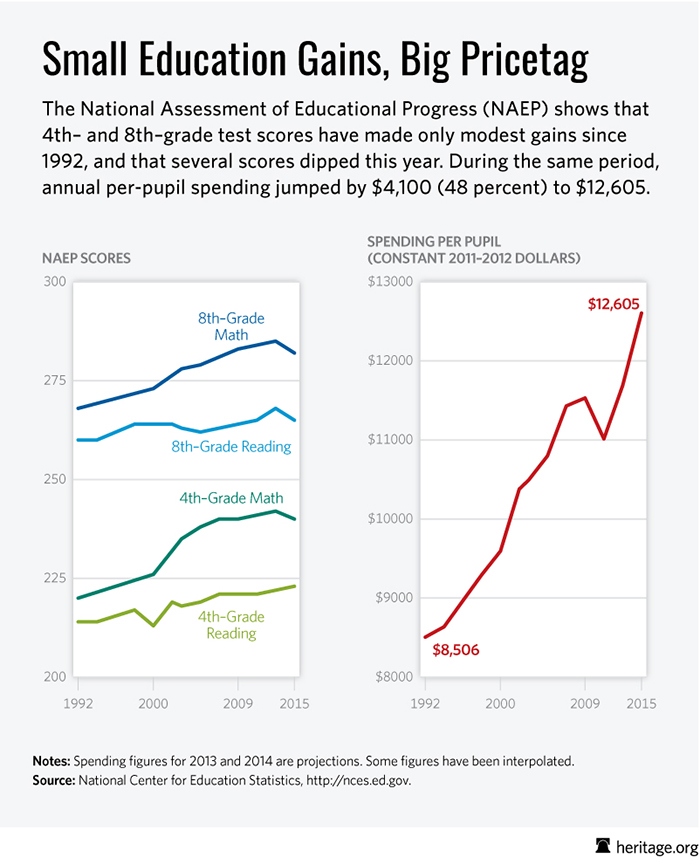New results are in from the test known as the “report card” for the nation’s schools, and they’re not good.
The U.S. Department of Education just released data from the 2015 National Assessment of Educational Progress, a nationally representative test measuring student achievement in mathematics and reading. The NAEP, administered every other year in math and reading, often is called the nation’s report card.
There no doubt will be numerous analyses of all the data that NAEP provides, including student subgroups, achievement gaps, state-specific results, charter performance, and progress (or lack thereof) over time.
But at first glance, the new results paint a picture of continued lackluster academic performance.
Math and reading achievement declined for both fourth- and eighth-graders from 2013 to 2015. Mathematics achievement declined at both the fourth- and eighth-grade levels, and reading achievement declined significantly for eighth-graders.
This is the first time since NAEP began being administered in 1990 that we’ve seen declines like this.
Only slightly more than one-third of children in grades 4 and 8 are proficient in reading; this figure is relatively unchanged, and achievement gaps between students remain.
These stagnant outcomes—and in some cases declines—in academic performance come despite continued increases in education spending, as noted in the chart above. These underwhelming outcomes add to the evidence that ever-increasing government spending is not the key to improving education.
Those concerned with improving education should focus not on how much is spent, but who can direct spending. Until the answer is parents, empowered through school choice options, this trend is likely to continue.
































